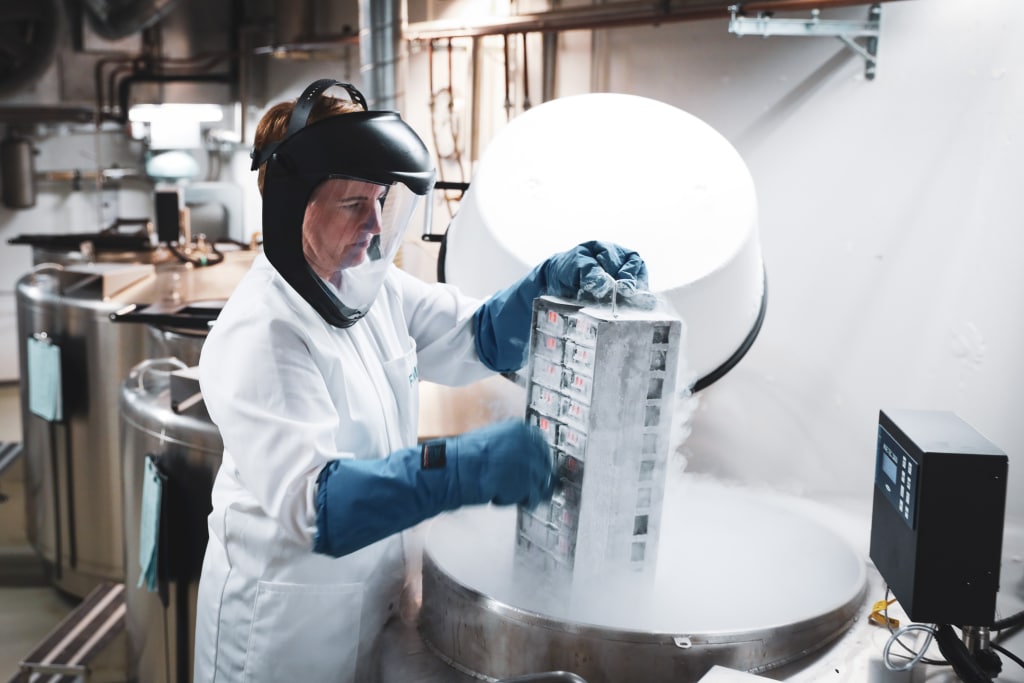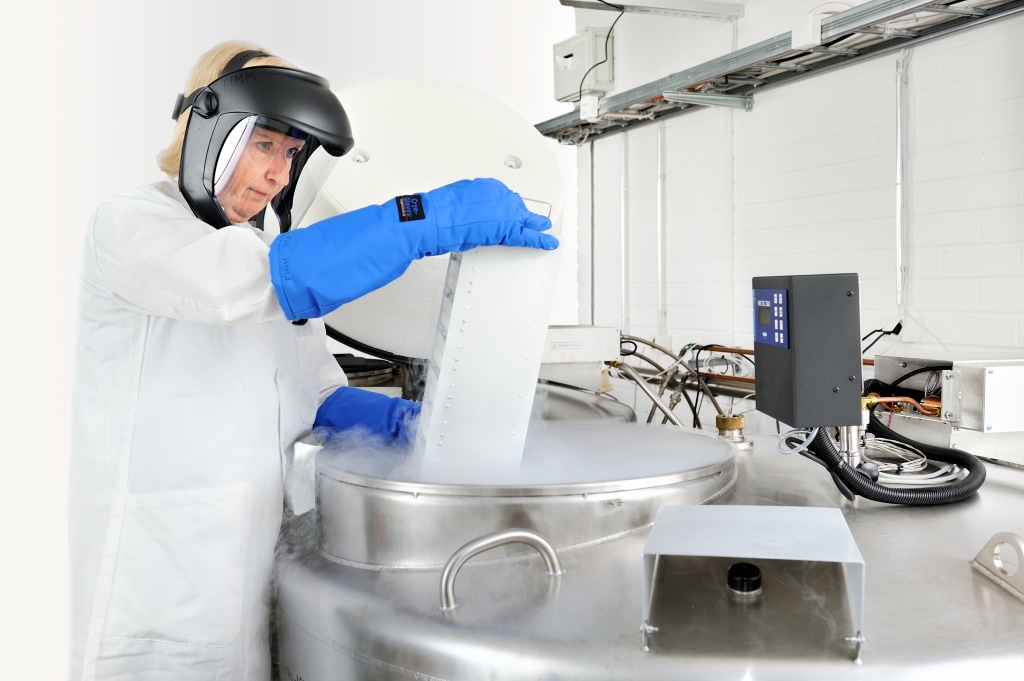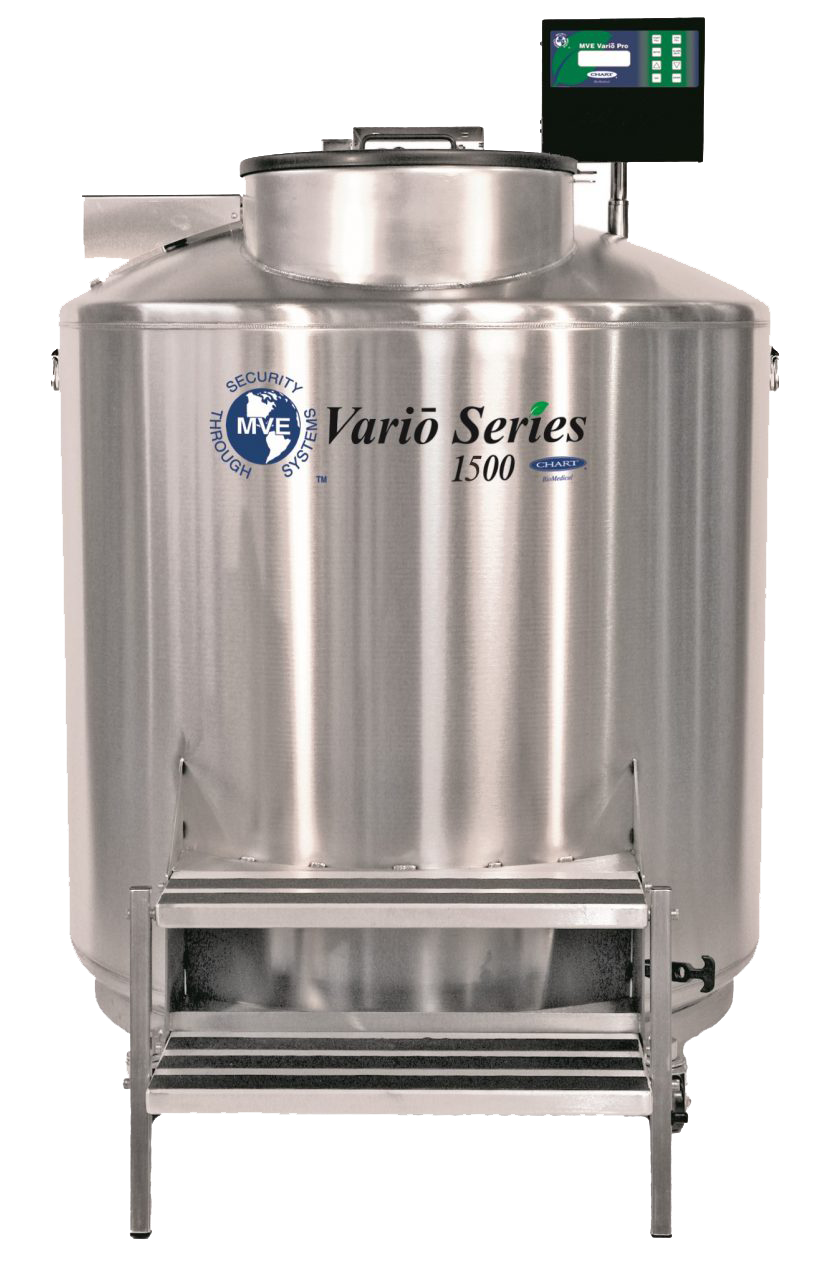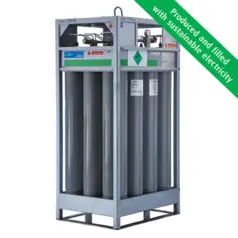
Efficient cryopreservation with automatic liquid nitrogen freezers
Linde solutions make cryotechnology easier to use. We have designs suitable for many different media and storage temperatures. Linde offers the widest range of products on the market for storage of biological materials and the most advanced vacuum technology in the sector. Our range includes liquid nitrogen deep freezers, liquid nitrogen cans and accessories. Thanks to our broad expertise, we can design and install "Turn key" systems that enable efficient and the most economical use of liquid nitrogen and the best return on your storage investment.
Method advantages compared with electrical freezers
Liquid nitrogen freezers are reliable, take up less space, save on maintenance costs and are quieter. They can also attain lower temperatures than comparable electrical freezers. Lower temperatures equal greater safety and a longer life for the samples. The devices also do not leak heat into the ambient air.
The high-power HE series uses 40% less nitrogen than standard
devices with a similar volume. Every freezer
is designed for optimum vacuum performance for duration of its use. Freezer structure enables samples to be
stored in vapour. The storage temperature, –190°C in the MVE HE (High Efficiency) models, is the lowest on
the market.
By choosing a liquid nitrogen freezer, you are installing a secure and viable environment free of noise and
heat created by mechanical refrigeration system.

Did you know?
● Nitrogen is an inert gas, which also eliminates the risk of fire or explosion.
● Liquid nitrogen (LIN) is an extremely effective cooling agent due to the low boiling point of –196
°C.
● Reducing the temperature from +20 °C to –196 °C (ΔT = 216 degrees) requires 0.5–1 liter of liquid nitrogen
per kilo of metal. Due to the risk of frost damage, liquid nitrogen must be handled like boiling water.

Automated liquid nitrogen freezers
Linde represents the world leading manufacturer of vacuum insulated products, Chart-Biomedical. MVE HE Series Automated Liquid Nitrogen Freezers where a temperature of –150 °C or –190 °C is maintained by circulating liquid nitrogen in the lower part of the device. The samples are frozen in vapour phase not by immersing them in liquid nitrogen.
The devices are designed to maintain a steady temperature regardless of whether the biological materials are stored in liquid or vapour. One freezer can accommodate 15,600 to 94,500 biological sample vials, and the size of the freezer can be selected according to the customer’s storage requirements.
The Liquid Nitrogen Freezers are equipped with a TEC 3000 Control System. TEC 3000 employs a variety of advanced features that enable the controller to monitor the environment inside a freezer with a high level precision. Individual freezers can be equipped with a 230-litre storage tank, with automatic regulation of liquid nitrogen. For larger cryopreservation systems, liquid nitrogen is fed through vacuum-isolated pipelines from an external tank to the freezers.
NEW innovative and energy efficient alternative for ultra-low temperature to cryogenic storage
Linde together with Chart Bio Medical offers the completely dry sample storage freezer. It will maintain a user-defined temperature anywhere between -50°C and -150°C.
The MVE Variō Series significantly reduces the possibility of sample contamination via contact with LN2 while providing the safety margin and consistent temperature profile, even with the lid open, that is associated with LN2 based cryogenic storage.
The MVE Variō Series is able to provide all of this with less than 1% of the power consumption and approximately 70% overall operating cost savings when compared to the leading mechanical freezers.

Chart MVE1800 Vario
What do customers say?
“Another thing that is really important to us is sample
safety. So in case of lack of electricity we can keep the samples frozen for two weeks after the last liquid
nitrogen refill, which wouldn’t be possible with electrical freezers, in which you typically have to evacuate
the samples within 24 hours.”
Tiina Vesterinen,
FIMM Sample Storage Helsinki Laboratory Coordinator
HiLIFE, University of Helsinki
Buy products here
Welding hose, blue single hose, 50m
 Downloads
Downloads
| Safety datasheets | Product datasheets & brochures |
|---|---|



